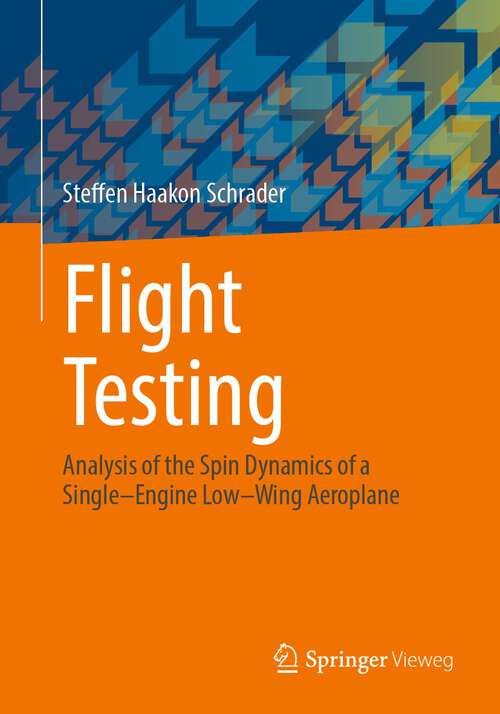Flight Testing: Analysis of the Spin Dynamics of a Single–Engine Low–Wing Aeroplane (1st ed. 2023)
By:
Sign Up Now!
Already a Member? Log In
You must be logged into Bookshare to access this title.
Learn about membership options,
or view our freely available titles.
- Synopsis
- As spinning is still involved in around 60% of all aircraft accidents (BFU, 1985 and Belcastro, 2009), this aerodynamic phenomenon is still not fully understood. As U.S. and European Certification Specifications do not require recoveries from fully developed spins of Normal Category aeroplanes, certification test flights will not discover aeroplane mass and centre of gravity combinations which may result in unrecoverable spins. This book aims to contribute to a better understanding of the spin phenomenon through investigating the spin regime for normal, utility and aerobatic aircraft, and to explain what happens to the aircraft in terms of the aerodynamics, flight mechanics and the aircraft stability. The approach used is to vary the main geometric parameters such as the centre of gravity position and the aeroplane’s mass across the flight envelope, and to investigate the subsequent effect on the main spin characteristic parameters such as the angle of attack, pitch angle, sideslip angle, rotational rates, and recovery time. First of all, a literature review sums up the range of technical aspects that affect the problem of spinning. It reviews the experimental measurement techniques used, theoretical methods developed and flight test results obtained by previous researchers. The published results have been studied to extract the effect on spinning of aircraft geometry, control surface effectiveness, flight operational parameters and atmospheric effects. Consideration is also made of the influence on human performance of spinning, the current spin regulations and the available training material for pilots. A conventional-geometry, single-engine low-wing aeroplane, the basic trainer Fuji FA-200-160, has been instrumented with a proven digital flight measurement system and 27 spins have been systematically conducted inside and outside the certified flight envelope. The accuracy of the flight measurements is ensured through effective calibration, and the choice of sensors has varied through the study, with earlier sensors suffering from more drift than the current sensors (Belcastro, 2009 and Schrader, 2013). In-flight parameter data collected includes left and right wing α and β-angles, roll-pitch-yaw angles and corresponding rates, all control surface deflections, vertical speeds, altitude losses and the aeroplane’s accelerations in all three directions. Such data have been statistically analysed. The pitch behaviour has been mathematically modelled on the basis of the gathered flight test data. Nine observations have been proposed. These mainly cover the effects of centre of gravity and aircraft mass variations on spin characteristic behaviour. They have all been proven as true through the results of this thesis. The final observation concerns the generalisation of the Fuji results, to the spin behaviour of other aircraft in the same category. These observations can be used to improve flight test programmes, aircraft design processes, flight training materials and hence contribute strongly to better flight safety.
- Copyright:
- 2023
Book Details
- Book Quality:
- Publisher Quality
- ISBN-13:
- 9783662632185
- Related ISBNs:
- 9783662632178
- Publisher:
- Springer Berlin Heidelberg
- Date of Addition:
- 04/07/23
- Copyrighted By:
- The Editor
- Adult content:
- No
- Language:
- English
- Has Image Descriptions:
- No
- Categories:
- Nonfiction, Technology
- Submitted By:
- Bookshare Staff
- Usage Restrictions:
- This is a copyrighted book.
